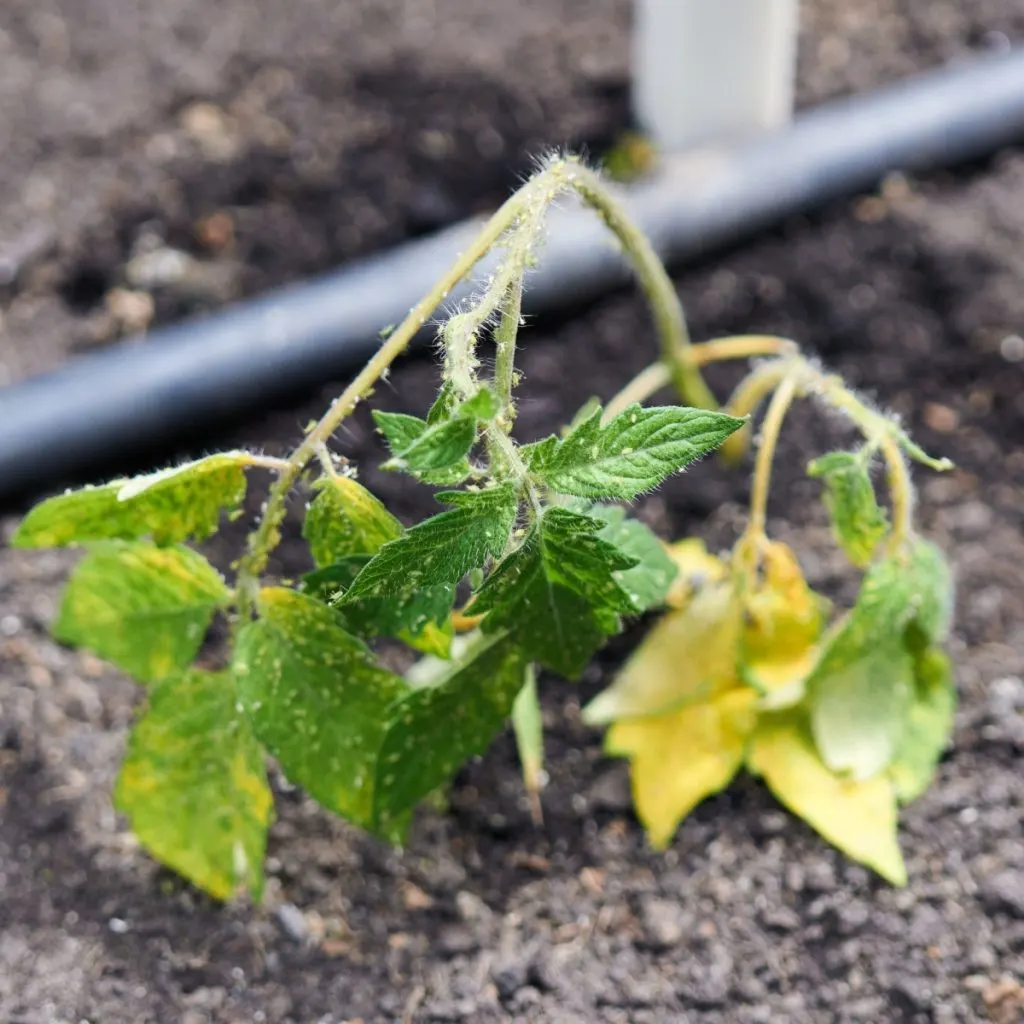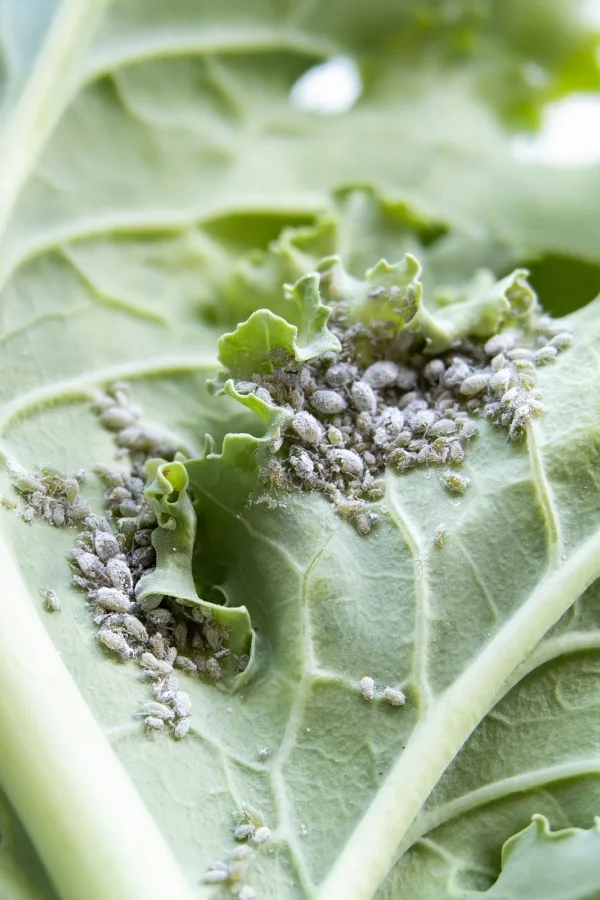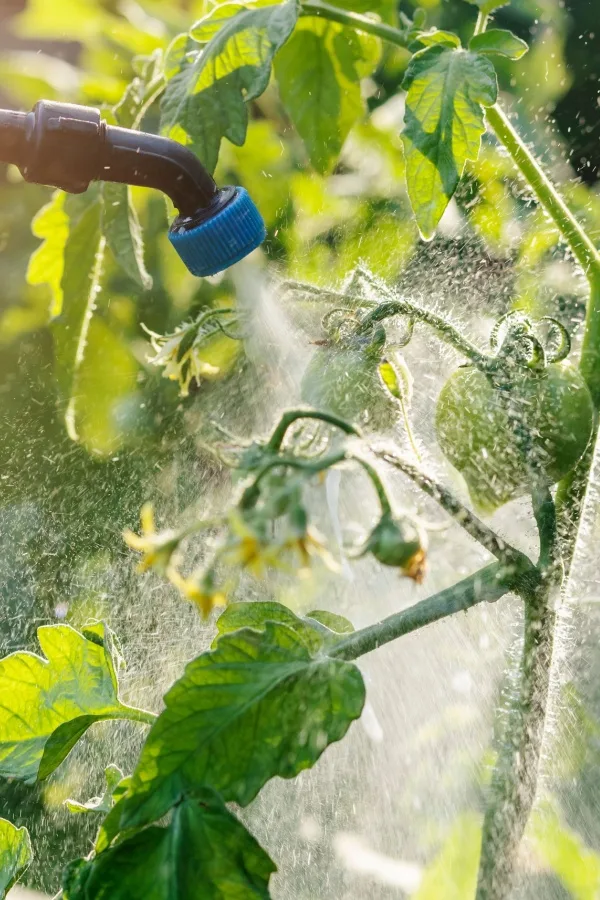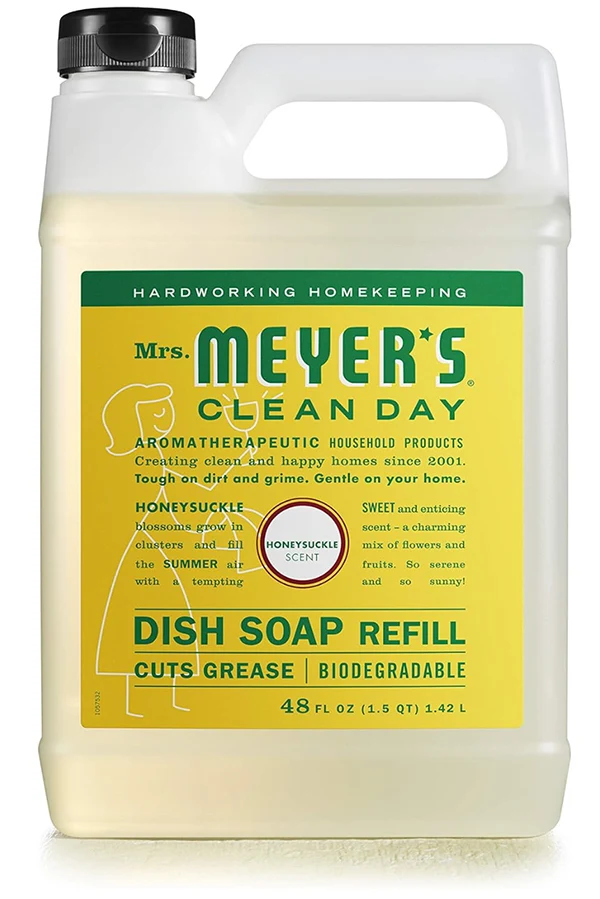Looking for the easiest and best way to get rid of the aphids on your tomato plants?
Aphids are one of the most common causes of damage and destruction to tomato plants. The tiny insects feed on the leaves, stems, and fruit, leaving behind stunted and weak plants in the process. It can be hard enough on more mature tomato plants – but it can be devastating to young tomato transplants.
What might start out as a small infestation can quickly turn into major problems. This is because aphids can multiply in no time at all. Even worse, as their numbers rapidly increase, aphids not only dine on plants, but carry along with them diseases, viruses, mold, and fungi.

What can be really difficult is that aphids can often be around without you knowing it. In fact, it’s often hard to spot aphid damage early on because the eggs and adults typically reside on the underside of foliage and stems. And once you spot damage, the damage is underway.
The good news? Thankfully, there are a few easy and quite simple ways to control an infestation. And even better, they don’t involve using harsh chemicals or harmful sprays. In fact, all it takes is a little time and your aphid problem can be washed away – literally!
Finding Aphids – How To Get Rid Of Aphids On Tomato Plants
Aphids are tiny soft-bodied insects that feed on the liquid of plants and their fruit. This feeding process drains the nutrients and moisture from plants, often leaving behind wilted leaves and ruined fruit.
Aphids will often cause curled and stunted yellow leaves. The fruit and flowers can also become deformed. As the aphids feed on the fruit, little indents and divots are formed, causing misshaped tomatoes.
If you see your tomato plants exhibiting any of these symptoms, it’s time to check the bottom of the leaves. Aphids like to hide under the leaves to provide them with extra protection from predators like ladybugs. This is also where they like to lay their eggs for the next generation.

Another sign of an aphid infestation is the presence of ants. Ants are drawn to a sticky, sugary substance that aphids produce as they eat. This substance is basically aphid waste and is called “honeydew.” Honeydew can cause a fungus growth called sooty mold to grow. It can cause the leaves and stems of the tomato plants to have a black appearance.
While the visible signs of aphids are concerning, it’s also the viruses and diseases that they transmit that are an issue. One thing is for sure – eliminating aphids as soon as you find them is the best way to keep your tomato plants safe!
3 Ways To Get Rid Of Aphids On Tomato Plants
Of course, more than anything else, the key to success is early detection. Check your tomato plants and all of the crops in your garden often. Look for any changes in growth or appearance and investigate further if needed.

It is easier to eliminate an infestation that is caught early as opposed to one that is allowed to multiply day after day. If you do find signs of aphids, one of the three safe yet effective methods below will do the trick. The best part is that none of them resort to using harsh chemicals!
#1 Water Spray – How To Get Rid Of Aphids On Tomato Plants
Believe it or not, one of the best ways to get rid of aphids on your tomatoes is by using plain old water.
Aphids have very fragile soft bodies. They also don’t have the ability to climb well. This means that if you knock them off your tomato plant and onto the ground, they will soon perish. Using your hose and a blast of water is often enough to dislodge them from your tomato plants.
While this method doesn’t kill the aphids immediately, a week or so of daily spraying will be enough to keep their damage manageable. The key to using water is to use a spray that is powerful enough to knock the aphids off the plant without damaging the delicate foliage.
Spray from the top of the tomato plant and work your way downwards. Be sure to spray the bottom of the leaves as well as the top. Also, it’s best to spray in early morning when the sun is not bright and hot. This will keep plants safe from sun scald. The plants can also dry off quickly as the day warms, preventing the possibility of mold and mildew.

#2 Soapy Water – How To Get Rid Of Aphids On Tomato Plants
If water alone doesn’t seem to be doing the trick, add a bit of mild liquid dish soap.
The water will help to dislodge adult aphids and their eggs while the soap goes to work on the ones left behind. At the same time, pollinators and other beneficial insects will not suffer any ill side effects.
Any mild liquid dish soap works well for this, but since you will be eating tomatoes from the plant, an organic product is best. Choose a product that is specifically labeled as biodegradable. It will be much safer to use in your garden space and around edible plants. Product Link: Mrs. Meyer’s Clean Day Liquid Dish Soap
The way this spray works is that the oil in the soap helps to deteriorate the outer protective layer of aphids. This causes the aphids to eventually dry out and perish.
To make, mix one teaspoon of liquid dish soap with every half gallon of water. Shake well and spray on the foliage of your tomato plants, being sure to soak both sides of the leaves. Repeat this process for a few days with larger aphid infestations.

#3 Neem Oil – How To Get Rid Of Aphids On Tomato Plants
To help get rid of an aphid infestation while also helping to prevent future attacks on your tomatoes, create a spray using neem oil. Product Affiliate Link: 100% Cold Press Neem Oil
Neem oil is made by pressing on the seeds of neem trees. It’s a product that has been around for hundreds of years and is 100% organic. When used correctly, it is also safe for pollinators and other beneficial insects in your garden space.
Simply mix 1 teaspoon of neem oil with 1 quart of water. Add in a few drops of liquid dish soap. This helps the oil distribute through the water and stick to the foliage of the tomato plants. Spray the mixture all over the foliage and stems of plants.
To help prevent hurting important insect pollinators, it’s best to apply the spray early in the morning or late at night when pollinators aren’t as active.
Here’s to using natural, safe methods to get rid of aphids on your tomatoes this growing season! And remember, the best defense of all against aphids is to have strong plants right from the start – and for that, be sure to check out our article: How To Help Struggling Tomato Plants – 3 Secrets To Get Tomatoes Growing!
I Grow Tomatoes
Follow Our Facebook Page For Even More Great Tomato Growing Tips! I Grow Tomatoes Facebook Page
I Grow Tomatoes is a website created for those who love all things about tomatoes – from planting and growing – to cooking and canning! We publish two articles every week, 52 weeks a year. Sign up today to follow via email! This article may contain affiliate links.
